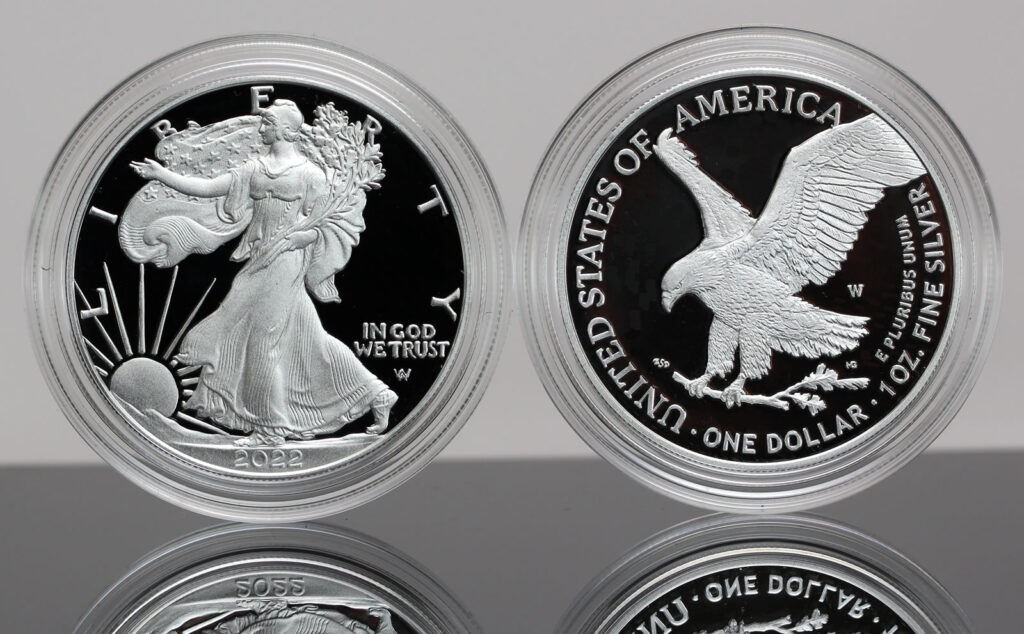
By Charles Morgan and Hubert Walker for CoinWeek Notes …..
During World War II, the United States mobilized over 16 million men into military service. Of this number, over 10 million were inducted through the draft, while the remainder were volunteers. This mass mobilization had profound impacts on American society, accelerating both the push for racial equality and reshaping the role of women in the workforce.
At the outset of the war, roughly 12 million women already participated in the labor market. These women were often young, single, and typically from working-class or immigrant backgrounds. They were heavily concentrated in “pink-collar” jobs such as domestic service, teaching, and clerical work, and many left the workforce when they got married or became mothers.
The war changed this dynamic dramatically. Nearly 6 million additional women entered the labor force between 1940 and 1945, and a large proportion of these new workers were married women and mothers. They were actively recruited to fill roles largely held by men, particularly in heavy industry and manufacturing. For instance, by 1943, women made up 65% of the U.S. aircraft industry’s total workforce, a massive increase from just 1% before the war. In addition to that, more than 350,000 women volunteered for military service, filling critical non-combat roles.
In the post-war period, many women were laid off to make way for returning servicemen. While some sources suggest that a majority of women initially wanted to keep their jobs, the prevailing cultural and economic pressures led to a significant, though temporary, decline in female labor force participation. This period saw a powerful social reinforcement of traditional gender roles. However, the experience of working in higher-paying, non-traditional jobs gave women new skills and a sense of independence. This period, and the subsequent “baby boom,” laid the groundwork for the Women’s Liberation Movement of the 1960s and 70s, which demanded an equality that was, in part, earned through toiling on factory floors to help secure victory for the “free world.”
Who Was Rosie the Riveter?
The name “Rosie the Riveter” first gained popularity in 1942 from a hit song of the same name. Written by Redd Evans and John Jacob Loeb, the song “Rosie the Riveter” celebrated a tireless, patriotic female assembly line worker. The song became a national hit, helping to popularize the name and the image of a female war worker.
The famous poster showing a woman in a red polka-dot bandana flexing her arm with the caption “We Can Do It!” was designed by artist J. Howard Miller in 1943. Miller was hired by the Westinghouse Electric & Manufacturing Company to create a series of posters for its in-house War Production Coordinating Committee. The poster’s purpose was for internal use, to boost the morale of the female workforce. Its public notoriety did not take effect until the poster was rediscovered in the 1980s.
It was Norman Rockwell’s muscular, sandwich-eating, Mein Kampf-stomping “Rosie the Riveter” that graced the cover of the May 29, 1943 Saturday Evening Post that captured the allegorical symbolism of the moment and the movement. It was as if Liberty had returned to help America kick nazi ass.
Recognizing Rosie the Riveter with a Gold Medal
To honor the contributions of women to the American war effort, Representative Jackie Speier (D-CA-14) introduced the Rosie the Riveter Congressional Gold Medal Act of 2019 (Public Law 116-195). The bill, signed into law by President Donald Trump on December 3, 2020, called for “a Congressional Gold Medal to be awarded, collectively, to the women in the United States who joined the workforce during World War II, providing the aircraft, vehicles, weaponry, ammunition and other material to win the war.”
The medal was designed by United States Mint Artistic Infusion Program Designer Beth Zaikan. The obverse side, engraved by Eric David Custer, features five Rosies in profile along with the inscription “ROSIE THE RIVETER.” The reverse side, engraved by John P. McGraw, shows Rosie with a wrench and rivet, surrounded by a Liberty ship, an M4 tank, and a B-17 bomber, representing America’s heavy machinery advancing the war effort. A ring of rivets encircles the design, with portholes inscribed with “ACT OF CONGRESS 2020” and “1942-1945.”
At a public ceremony in Emancipation Hall at the U.S. Capitol on April 10, 2024, a single gold medal was presented to 98-year-old Anna Mae Krier. At age 17, Krier went to work for Boeing in 1943, building B-17 “Flying Fortresses.” She was joined by 26 other women from across the country, most of them in their 90s, including 106-year-old Velma Long. These women represented the more than 8 million women who entered the workforce in new roles during the war.
Bronze Versions of the Rosie the Riveter Medal Were Made For Collectors
For collectors, the United States Mint produced bronze versions measuring 3″ and 1.5″. The 3-inch medals were issued at $160, while the 1.5-inch medals were listed for $20.
* * *
The post Rosie the Riveter Congressional Gold Medal : A Collector’s Guide appeared first on CoinWeek: Rare Coin, Currency, and Bullion News for Collectors.




